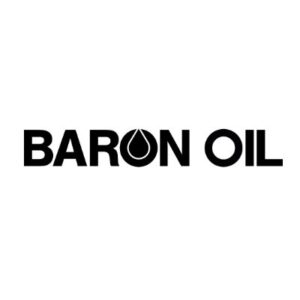Baron Oil plc (LON:BOIL) Chief Executive Officer Andy Yeo caught up with DirectorsTalk to discuss the Competent Persons Report on Chuditch, gas volumes and the Company’s valuation.
Q1: You recently announced and published a Competent Persons Report on your Chuditch asset in Timor-Leste. Can you tell us what you made of the CPR and the highlights from it?
A1: Actually, we were pretty pleased with the way the CPR turned out as primarily it supported our view that the project contains the substantial resource.
A Contingent Resource which is an important milestone for us, I guess, as it helps us to move down a select pathway was an important part of that and we’ve basically said to investors that we think we will be able to achieve that which we have done. That really just drives it in terms of talking to potential funding partners, the idea of momentum and indicating rising value so that’s really helpful in terms of that.
In terms of the volume around that 1.1 Tcf of gas, I’ll use some technical terms because it’s the best way of framing it, which is a gross Pmean of about 180 million barrels of oil equivalent. That was pretty well in line with our best expectations and suggests that we’ve got a level of commerciality there for the Chuditch-1 discovery.
So, I guess what investors really want to know is ‘is that enough gas to make funding partners sit up and listen?’ and the short answer to that is yes, definitely. The CPR will be invaluable to Baron Oil over the coming months as we go back and talk to funding partners in June and into the summer.
Q2: Going into a bit more detail, can you explain the gas volumes to us and the different definitions used?
A2: It’s a difficult one because, as you know, this industry is full of technical terms and it’s really difficult to sometimes navigate your way around it. One of the things we have noticed I think was people mixing up between the amount of gas we think we might recover versus the actual gas that’s still in place.
So, the term there is the gas originally in place which is the GIIP. Now, we originally estimated that we thought that was around 5.5 Tcf and ERC are quoting in their CPR for an equivalent number there at 4.7 so we’re not far adrift there.
You’ll see it’s nothing to worry about from where we are today but it shouldn’t be confused really with the recoverable which refers to the amount of gas you ultimately recover from the formation.
So, the overall resource which was estimated by ERCE was 2.7 Tcf of which 1.1 was the contingent resource I mentioned earlier, and that was identical pretty well to where we thought we’d be.
The prospective resources, that’s the balance of the 2.7, that was lower in terms of the RC point of view due to the lack of 3D coverage , some of it that wasn’t covered by the 3D coverage on the Chuditch NE and the Quokka.
Now, this doesn’t mean the gas isn’t there, that simply means that we need to mature it and that will be a useful follow-on on the basis of a success on the appraisal well in next year, basically.
Q3: Has anyone recently published a valuation on Baron Oil?
A3: Yes, actually our broker Allenby has come up with an updated risks valuation for the Company, and our consultants.
Basically, from where they are today, they are suggesting a valuation of $237 million, that compares to our market cap today which is around $34/$35 million. A success case valuation which is quite a long way out to e fair of something like $800 million, that’s 3.7p and so our $237 million stands at 1.02p.
This uses the valuation concept which I think is probably the most sensible way to go froward at this point of dollar barrel in the ground, so roughly speaking 1 to 1.3 for prospective resource, 2.5 for the contingent resource and then up to 5 on a success case.
The use of NPV generally works best for projects that are later stage and are much more clearly defined and, as you can image, even within that, there’s a number of moving parts in such a calculation.
So, I’d encourage actually people to look at the Allenby note, which you can get to via our website, which sets out the variables and they’ll help you to understand the valuation constructs and you can play with the numbers and figure out where you think it makes sense.
Ultimately, our focus at this point now is to get us into a position to drill the appraisal well which in itself should result in a significant uplift in value even before the drilling takes place sometime in the next year or so.


